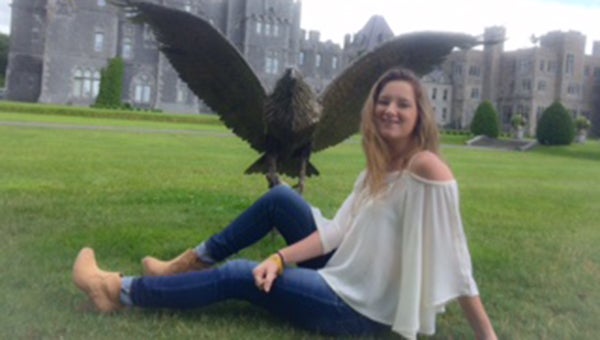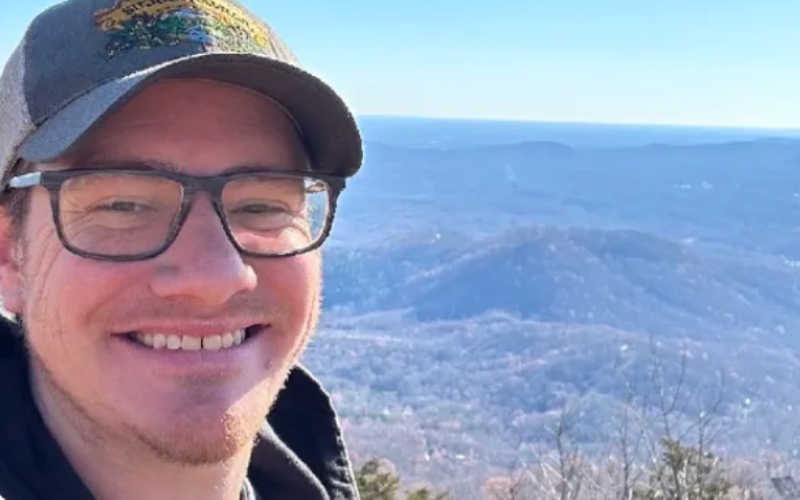Former PCHS student takes up falconry at Ireland’s Ashford Castle
Published 10:00 pm Friday, July 22, 2016
Emily Noland talks about her quest to become a falconer
Emily Noland is someone who stands out from the crowd with her hawk perched on her wrist, ready for it to take flight as part of the 4,000-year-old art of falconry.
A 2015 graduate of Polk County High School and employee at Side Street Pizza in Tryon, Noland just recently returned from Ireland where she trained to become a falconer. Noland said she wanted to get into falconry after enrolling in the wildlife biology program at Lees-McRae College in Banner Elk, N.C.
Trending
“We have a rehabilitation center on campus, so we get injured animals all the time,” Noland explained. “I haven’t really started working in the rehab center yet, but I will next semester and we mainly just learn how to nurse the animals back to health and then train them to go back into the wild. If we can’t release them, we’ll train them as an ambassador, which means we’ll take them to elementary schools to show kids the different types of animals.”
When she’s not at school, Noland is working on her falconry training at Ashford Castle in Ireland. Her mother, Kimberly Noland, said her entire family is proud of her for pursuing falconry, as no one in the family has done anything like this.
“It’s the number one falconry place in the entire world,” Noland said. “I really enjoyed it, and Lees-McRae has a wildlife rehab center but we mainly have birds of prey so I kind of got interested in birds of prey and my family goes to Ireland every year.”
Getting an internship in Ireland working with birds of prey was Noland’s goal while she visited Ireland this year. She said she spent two and a half weeks at the Ashford Castle learning how to care for the hawks there, immersing herself in how to feed the hawks and fly them.
“The castle is two hours from Shannon, more towards the southern part of Ireland,” Noland said. “I learned how to handle the birds and how to take their dressings off, because they have dressings for their perch and dressings for their flying.”
Noland carried on to explain the dressings for the hawks while they are sitting on the perch are too heavy for flying, therefore she needed to learn how to properly switch dressings so that the hawk may then take flight.
Trending
“We have to weigh the birds every morning to see if they are at a weight where they will be able to fly properly,” Noland explained. “If they are too heavy, they won’t want to come back to your glove. If they are too full, they won’t want food and won’t come to your glove. They will just sit up in a tree and look at you.”
Conversely, Noland said if they are too light for flight, the bird will just want more food and refuse to take off.
“You have to have them at the right weight to be able to fly,” Noland said. “And that depends on the bird. Some fly well at a certain weight, and some fly at a higher weight than another bird.”
According to Noland’s mother Kimberly, Emily had to sort through castings to see if the birds were eating the appropriate diet. Castings are pellets the birds would sometimes regurgitate, and each pellet contains the contents of the birds’ diets.
From there, a decision would be made on which hawk would fly first or wait until the end of day and how many times each hawk could fly.
“Of course, her duties include cleaning out the aviaries, processing their meals which include pheasants, chicks and beef and completing a diary of how well each bird flew including out of the ordinary behavior,” Kimberly said. “She has learned so much during this internship with an invitation to join the team once again next summer.”
Harris hawks are what Noland mainly flew at the castle, and she said she did not get a chance to fly the falcons because they need to have a chance to warm up to the handler.
“Falcons are not really a social bird, so they have to warm up to you and get to know you before you can fly them,” Noland explained. “But, a Harris hawk will be like, ‘Oh, you have food in your hand, so I will come to you.’”
Noland is also pursuing her falconer’s license, which includes a written test online and two years worth of hands-on training through an apprenticeship with an experienced falconer.
“Before you can trap your own hawk, have your own hawk or falcon to fly, you have to do the apprenticeship,” Noland said. “I’m trying to go back next summer and maybe do my apprenticeship there, and then go back the next summer to add up to two years before I graduate college.”
Holding your hand out for the hawk to come towards your perch in a certain way is the key thing to remember. Mastering this technique is the hardest aspect of falconry.
“You want to keep your thumb on top with your hand closed and your thumb just a little bit above your elbow,” Noland explained. “They want a high perch, and it has to be kind of slanted because they want to rest right on your thumb.”
Working in Ireland is what Noland said she has always wanted to do, and the opportunity to do something she is really interested in is exciting. When Noland graduates from Lees-McRae, she said she would have the experience in working with animals, which is something she said she thought was really cool.
“I can kind of see myself doing this as a career in the future,” Noland said. “I, at first, wanted to be an anesthesiologist, but when I started taking the animal science classes at Polk County High School, that’s when I fell in love with working with animals.”






